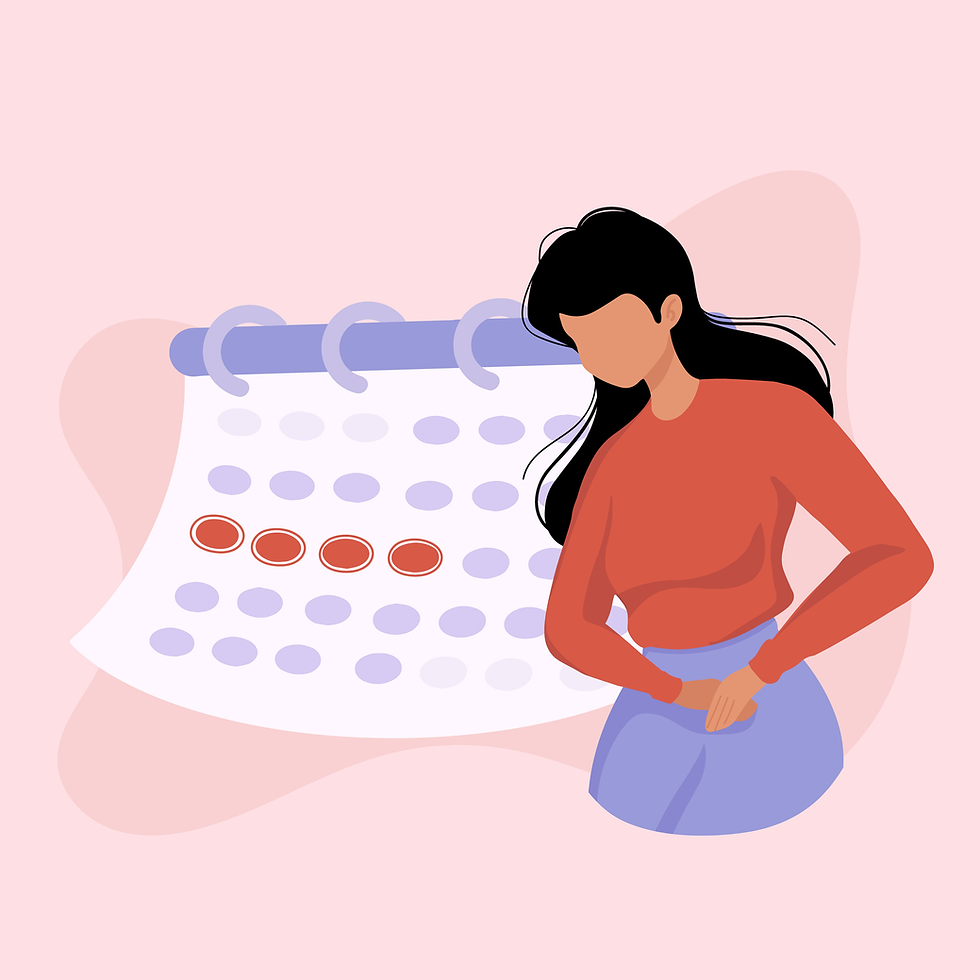Understanding Your Cycle: Part 4, Luteal Phase
- nw5201
- Apr 22
- 4 min read

We often learn about the menstrual cycle in three main parts: the period, the time leading up to ovulation, and ovulation itself. However, to truly understand the intricate rhythm of a woman's body, we need to recognize the luteal phase as the crucial fourth phase of this defining biological cycle [Implied in the structure of training advice based on the cycle]. Following menstruation, the follicular phase, and ovulation, the luteal phase plays a vital role in our physical and emotional well-being. Understanding this phase can empower you to better connect with your body's natural fluctuations.
The Hormonal Shifts of the Luteal Phase
The luteal phase begins right after ovulation, when the egg is released from the ovary. The follicle that once contained the egg undergoes an amazing transformation, becoming a temporary gland called the corpus luteum. This new gland takes on the primary role of producing the hormone progesterone, which rises significantly during this phase. While oestrogen levels might also fluctuate in the latter part of the cycle, progesterone becomes the dominant hormone [Implied in the comparison of follicular and luteal phase training]. Often referred to as the ‘pro-gestation’ hormone, progesterone prepares the body for potential pregnancy. If we think of oestrogen in the follicular phase as a hormone that encourages us to be active and take on challenges, progesterone in the luteal phase acts more like a "be-calm-steady-Eddie" hormone, aiming to protect a potential pregnancy.
How the Luteal Phase Impacts Athletic Performance
The change in hormonal balance during the luteal phase can lead to various physiological effects that can influence athletic performance and training [Implied in the general training advice].
Strength Training: The concept of SSTiF (Stacking Strength Training in Follicular) suggests that greater strength and muscle size gains might be achieved by focusing more strength training in the follicular phase (when oestrogen is higher) and adjusting the intensity and volume during the luteal phase. This approach considers that the physiology of your cycle can amplify the effects of training. Some coaches even use the term "follicular finisher" for athletes in their follicular phase who feel they can handle additional strength work.
Skill and Coordination: Progesterone in the luteal phase may contribute to a slight change in skill and coordination for some individuals. Coaches have observed that certain athletes might experience times when they are "slightly off" in their ability to execute skills under pressure or anticipate movements as effectively. While research in this area is limited, being aware of this potential influence can help you focus on maintaining technique and being patient with yourself if you notice any inconsistencies.
Fatigue and Energy Levels: Many women report experiencing lower energy levels and increased fatigue during the luteal phase, particularly in the premenstrual period. This can impact motivation and the capacity for high-intensity training, suggesting a possible need to adjust training intensity or choose lower-impact activities.
Recovery: While oestrogen is linked to better muscle recovery, the higher progesterone levels in the luteal phase might influence this differently. Continuing to prioritize sufficient rest and recovery is crucial during this phase, ensuring adequate nutrition, especially if maintaining higher training loads [Implied in the general training advice].
Injury Risk: While there's much discussion about the menstrual cycle and injury risk, it's not as simple as saying the luteal phase directly causes injuries. Injury is complex and involves numerous factors. However, some athletes find they are more prone to niggles or pain at certain times in their cycle, potentially due to hormonal effects on joint laxity. Tracking these patterns can provide valuable insights for proactive management, such as modified warm-ups or the use of supportive taping.
Mood and Emotions (PMS): The luteal phase is often associated with premenstrual symptoms (PMS), which can include mood changes and emotional sensitivity. These emotional shifts can affect confidence and motivation for exercise. Recognizing these potential changes and having strategies to manage them is important for maintaining an active lifestyle.
Beyond Athletic Performance: Understanding the Luteal Phase
The luteal phase has implications that extend beyond athletic performance, affecting various aspects of a woman's well-being.
Premenstrual Symptoms (PMS): As mentioned, the luteal phase is commonly associated with PMS. Symptoms can vary widely, including changes in mood, energy levels, appetite, sleep, and physical discomfort. In a survey of over 14,000 active women, 88% reported that their cycle symptoms negatively impacted their training at some point.
Mood and Emotions: Hormonal fluctuations during the luteal phase can influence mood. While it's important not to dismiss emotions as solely hormonal, understanding the cyclical nature of these feelings can provide valuable context and encourage self-compassion. Open communication with those around you about these potential shifts can also foster better understanding and support.
Nutritional Considerations: The hormones of the menstrual cycle can influence blood sugar stability. In the luteal phase, some women might experience more peaks and crashes in blood sugar, potentially affecting appetite and mood. Being mindful of consistent energy intake and nutrient-dense food choices is important.
Sleep: Sleep patterns can also be affected during the luteal phase for some women . Prioritizing good sleep hygiene becomes particularly important during this time to support overall well-being .
Conclusion: Embracing the Rhythm of Your Luteal Phase
Recognizing the luteal phase as the distinct fourth part of your menstrual cycle provides a deeper understanding of your body's natural rhythms [Implied in the structure of training advice based on the cycle]. By acknowledging the hormonal changes and their potential effects on your energy, mood, and physical capabilities, including athletic performance, you can learn to work with your body. Tracking your cycle, noticing your individual experiences, and implementing self-care strategies will empower you to navigate the luteal phase with greater awareness and promote overall health and well-being.


Comments